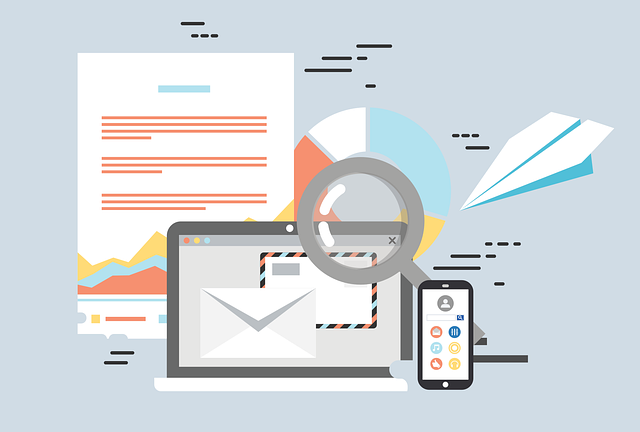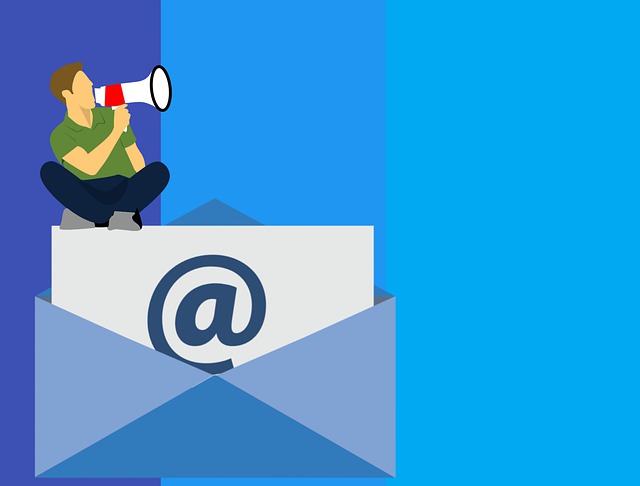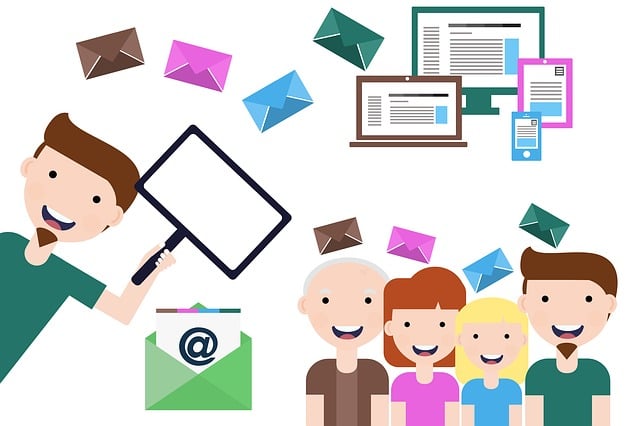Are you hungry for success in the restaurant and food industry? Well, get ready to feast on the 10 essential email marketing strategies that will satisfy your cravings for increased customer engagement and revenue.
Just like a perfectly seasoned dish, these strategies are designed to tantalize your audience and leave them hungry for more.
Imagine your email list as a recipe book filled with loyal customers who can’t wait to devour your latest offerings. With a dash of personalization and a sprinkle of automation, you can create engaging email content that speaks directly to their taste buds. And don’t forget the secret ingredient: a strong call to action that leaves them craving a reservation or a takeout order.
But don’t just take our word for it. By monitoring and analyzing your email campaign performance, you can gather valuable data that will inform your future marketing decisions. With continuous improvement and adaptation, you can ensure that your email marketing strategy is always fresh and appealing.
So grab your apron and get ready to cook up some email marketing magic. It’s time to take your restaurant or food business to the next level.
Key Takeaways
- Personalization and automation are key strategies for successful email marketing in the restaurant and food industry.
- Building an email list of loyal customers through segmentation is crucial for effective targeting.
- Crafting compelling subject lines and personalized content helps to increase open rates and engagement.
- Monitoring and analyzing email campaign performance, including metrics such as open rates, click-through rates, and conversion rates, is essential for measuring success and making improvements.
Build an Email List of Loyal Customers
Now, let’s talk about how you can build an email list of your most loyal customers. The key to successful email marketing in the restaurant and food industry is targeting your promotions to the right audience. This is where email segmentation comes in.
By dividing your customer base into specific groups based on their preferences, you can send targeted promotions that are more likely to resonate with each individual. For example, you can send special offers to customers who frequently order takeout or discounts on their favorite dishes.
By personalizing your emails, you show your customers that you value their loyalty and understand their preferences. This not only increases the chances of them opening and engaging with your emails, but also encourages repeat business.
Speaking of engaging and personalized email content, let’s move on to our next topic.
Create Engaging and Personalized Email Content
Immerse your customers in a culinary journey by crafting engaging and personalized email content that speaks directly to their taste buds.
To capture their attention, start with creating compelling subject lines that entice them to open your emails. Use enticing language and highlight the unique aspects of your food and dining experience.
Once they open the email, make it personal by utilizing personalization techniques. Address your customers by their names and tailor the content based on their preferences and past orders.
Incorporate mouth-watering images and descriptions of your delectable dishes to make them crave a visit to your restaurant.
By creating engaging and personalized email content, you can build a stronger connection with your customers and increase their loyalty to your brand.
Now, let’s explore how you can use automation to save time and increase efficiency.
Use Automation to Save Time and Increase Efficiency
By harnessing the power of automation, you can effortlessly streamline your operations and turbocharge your productivity, like a well-oiled machine in the kitchen. Email automation benefits restaurants and the food industry by saving time, increasing efficiency, and ensuring consistent and timely communication with customers. With the right email automation tools, you can easily set up automated campaigns for different customer segments, such as new subscribers, loyal customers, or those who haven’t visited in a while. This allows you to send personalized and targeted emails that resonate with your audience, leading to higher open rates, click-through rates, and ultimately, more conversions. Additionally, automation can help you manage reservations, send order confirmations, and even gather feedback, all without manual intervention. By implementing a strong call to action in every email, you can further drive customer engagement and encourage them to take the desired action.
Implement a Strong Call to Action in Every Email
Maximize the impact of your emails by incorporating a compelling call to action that captivates your audience and motivates them to engage with your restaurant or food business.
Incorporate compelling visuals, videos, and GIFs in your emails, and optimize for mobile devices. Visual content is known to increase engagement and make your emails more memorable.
Additionally, use segmentation to target specific customer groups and personalize your email offers. By tailoring your messages to the preferences and behaviors of different customer segments, you can increase the likelihood of conversion and customer loyalty. For example, you can send exclusive offers to your most loyal customers or promote new menu items to those who have shown interest in similar dishes.
By incorporating these strategies, you can create emails that not only grab attention but also drive action.
Now, let’s move on to the next section where we’ll discuss how to monitor and analyze email campaign performance.
Monitor and Analyze Email Campaign Performance
Keep a close eye on the performance of your email campaigns to gain valuable insights and make data-driven decisions that will skyrocket your restaurant’s success. Monitoring email metrics and optimizing email deliverability are crucial for a successful email marketing strategy. By tracking metrics such as open rates, click-through rates, and conversion rates, you can identify what works and what doesn’t. Use this data to refine your content, subject lines, and overall email strategy. Additionally, monitor email deliverability to ensure your emails are reaching your subscribers’ inboxes. A strong deliverability rate means more people are seeing your messages and engaging with your restaurant. To help you track and analyze your email campaign performance, use the following table:
| Metric | Calculation | Benchmark |
|---|---|---|
| Open Rate | Unique Opens / Total Sends | >20% |
| Click-Through Rate | Unique Clicks / Total Sends | >3% |
| Conversion Rate | Conversions / Total Sends | >5% |
| Bounce Rate | Bounced Emails / Total Sends | <2% |
| Unsubscribe Rate | Unsubscribes / Total Sends | <1% |
By monitoring these metrics, you can continuously improve and adapt your email marketing strategy to drive even better results.
Continuously Improve and Adapt Your Email Marketing Strategy
To continuously improve and adapt your email marketing strategy, you should experiment with different types of email campaigns like newsletters and surveys. This will allow you to test what resonates best with your audience and optimize your approach.
Additionally, seeking feedback from your customers will help you understand their preferences and tailor your emails accordingly.
Finally, staying updated on industry trends and best practices in email marketing will ensure that you’re always implementing the most effective strategies and techniques.
Experiment with different types of email campaigns (e.g., newsletters, surveys)
Try out various types of email campaigns, such as newsletters and surveys, to keep your audience engaged and excited about your restaurant or food business. A/B testing effectiveness is a great way to measure the success of different campaigns and understand what resonates with your audience.
By segmenting your email list based on customer preferences, you can personalize your campaigns and deliver targeted content that’s more likely to drive engagement and conversions. Use newsletters to showcase new menu items, share exclusive discounts, and provide updates about your restaurant.
Surveys are a valuable tool for gathering feedback and understanding customer preferences. Ask your audience about their favorite dishes, dining experiences, or even solicit ideas for new menu items.
This data-driven approach will help you tailor your email marketing strategy to meet the needs and preferences of your customers. Seeking feedback from customers to understand their preferences is the next step in creating a highly effective email marketing strategy.
Seek feedback from customers to understand their preferences
Discover what your customers truly crave by actively seeking their feedback and engaging in meaningful conversations that paint a vivid picture of their dining desires. Customer satisfaction is the key to success in the restaurant and food industry, and one of the most effective ways to achieve it is through feedback analysis.
By gathering feedback from your customers, you can gain valuable insights into their preferences, likes, and dislikes. Use surveys, comment cards, or even personal conversations to gather this information. Analyze the feedback to identify patterns and trends, and then use these insights to tailor your email marketing campaigns accordingly.
By understanding your customers’ preferences, you can create personalized and targeted emails that resonate with them, leading to increased engagement and ultimately, more loyal customers.
Stay updated on industry trends and best practices in email marketing to ensure your strategies are always fresh and effective.
Stay updated on industry trends and best practices in email marketing
Staying in the loop on the latest trends and best practices in email marketing is a must if you want to keep your restaurant’s promotional campaigns fresh and effective. Email marketing metrics and tracking are essential tools that allow you to measure the success of your campaigns.
By analyzing open rates, click-through rates, and conversion rates, you can gain valuable insights into what resonates with your audience and adjust your strategies accordingly.
Another important technique is segmenting email lists for targeted campaigns. By dividing your subscriber base into smaller groups based on factors like demographics, past purchase behavior, or preferences, you can send more personalized and relevant content. This approach increases engagement and conversion rates, as it ensures that your messages are tailored to the specific interests and needs of each segment.
Stay updated on these industry trends and best practices to optimize your restaurant’s email marketing campaigns.
Frequently Asked Questions
How can I encourage customers to sign up for my email list?
To entice customers to join your email list, use the P.A.R.T.Y. method:
- Personalize your sign-up form by addressing their specific needs.
- Add incentives like exclusive discounts or freebies.
- Regularly send engaging emails with mouthwatering visuals and compelling content to keep them hooked.
- Track their preferences and send targeted emails based on their interests.
- Yield impressive results by implementing these effective email list building strategies and captivating your audience through personalized, data-driven email marketing.
What types of personalized content should I include in my emails?
To effectively personalize your emails, you should utilize personalization techniques and email segmentation.
Segment your email list based on customer preferences, purchase history, or location.
Craft tailored content that speaks directly to each segment’s interests and needs.
Use dynamic content to insert personalized details such as their name, favorite dishes, or special offers based on their previous orders.
This data-driven approach will increase engagement, customer satisfaction, and ultimately drive more conversions for your restaurant or food business.
Are there any tools or software that can help automate my email marketing efforts?
Yes, there are several email marketing tools and email automation software available that can help streamline and automate your email marketing efforts.
These tools offer features like scheduling emails, segmenting your audience, and personalized content creation. With email marketing tools and automation software, you can save time and effort while still delivering targeted and engaging emails to your customers.
Increase your efficiency and effectiveness with these powerful tools designed to enhance your email marketing campaigns.
How can I create a strong call to action that will encourage customers to take action?
To create a strong call to action that drives customer action, start by investigating the truth behind effective email subject lines. Craft subject lines that are compelling, concise, and personalized to capture attention.
Next, optimize your email designs for better conversions by using eye-catching visuals, clear and concise copy, and strategically placed buttons. Data-driven testing can help you identify what works best for your audience.
Remember, concise and persuasive language is key to driving action.
What key metrics should I be tracking to measure the success of my email campaigns?
To measure the success of your email campaigns, you need to track key metrics. These metrics include open rates, click-through rates (CTRs), conversion rates, and unsubscribe rates. These email campaign success metrics provide valuable insights into your audience’s engagement and interest. Analyzing email engagement will help you identify what content resonates with your customers and what needs improvement. By monitoring these metrics, you can make data-driven decisions to optimize your campaigns and drive better results.
Conclusion
Congratulations! You’ve reached the end of this insightful article on email marketing strategies for restaurants and the food industry.
Now armed with valuable tips, it’s time to put them to action and watch your business thrive.
So, gather your loyal customers, create personalized content, and automate your emails for increased efficiency.
With a strong call to action in every message, you’ll see your email list grow and your revenue skyrocket.
Remember, Rome wasn’t built in a day, so continuously monitor, analyze, and improve your campaigns.
Success is just an email away!









